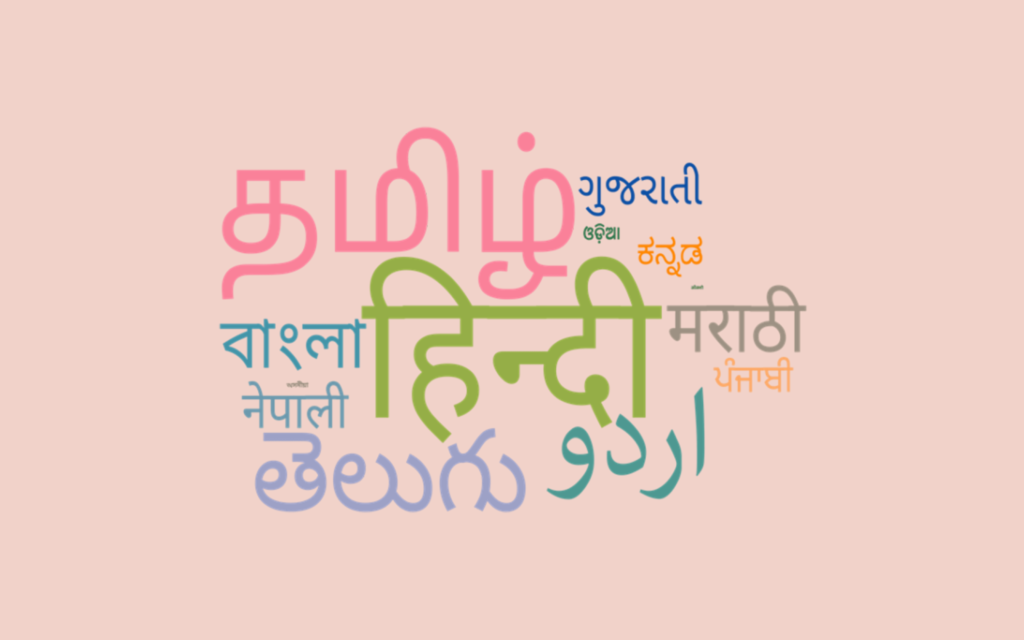February 12, 2022
Good morning. Every Saturday, we write about one specific right that you possess as a citizen in our country. In today’s edition of “Know Your Rights”, we look at the rights of linguistic minorities in India.
KNOW YOUR RIGHTS – EDITION 26
Rights of Linguistic Minorities

According to the 2011 census, India is home to 19,569 languages. After enough linguistic scrutiny, 1,369 of them were “rationalised” as mother tongues. Now, out of those mother tongues, around 400 of them are facing the threat of extinction in the next 50 years. And despite having this vast array of sounds and meanings available to us, most Indians stick to the 22 scheduled languages provided in the Constitution. All of this is beside our coloniser’s tongue, English, of course.
As awe-inspiring and existential this data seems, it is important to remember that the protection of these languages is of utmost importance. When we lose a language, we aren’t just losing a few words. The death of a language usually comes with the death of a culture, a people, a way of life. Think about it, we still don’t know what the script from the Indus Valley means.
Besides, language can be a great unifier and our Drafting Committee understood this. That’s what articles 29 and 30 of the Indian Constitution, part of our fundamental rights, seek to protect.
- Article 29 protects the interest of minorities while facilitating migration. The first half of it talks about a citizen’s right to conserve their “distinct language, script or culture”. And the second half goes over how citizens cannot be denied admission to state-run educational institutes and be kept from receiving aid because of their language, caste, race or religion.
- Article 30 covers the right of a citizen belonging to a minority group, whether it’s religion or language, to promote their beliefs and culture through educational institutions. The article clearly mentions that these minorities are allowed to “establish and administer” these educational institutes. It also says that the government shall not discriminate against them based on this when it comes to granting aid.
Though, these proved to be quite inadequate once enacted in a practical sense. In 1956 and 1957, the Constitution went through a couple of changes. By this time, the Constitution had already been amended around 7 times. When it comes to protecting linguistic minorities, however, the consecutive years gave us articles 350-A and 350-B.
- Article 350-A says that each state and the local authority has to provide facilities for children from linguistic minorities to receive instructions in their mother tongue during their primary education.
- Article 350-B says that the President shall appoint a Special Officer that investigates matters relating to the protection of linguistic minorities. This Special Officer only reports to the President.
While the wording of these articles kept things just vague enough to cover a large group of people, problems started arising because of the Constitution’s lack of a tangible definition. Turns out, neither our Constitution nor any legislation actually defined what a linguistic minority is. This rather significant gap had to be filled by our courts instead.
In 1971, during the D.A.V. College, Jullundur v. State of Punjab case, the Supreme Court said a minority group is determined by its population in relation to the state’s population. If the group’s population covers less than 50% of the state’s population, then it is a minority group. This formula applies to all states, districts, towns, etc. It also said that as long as the minority group has a distinct spoken language, even without a functioning script, they qualify as a linguistic minority.
The apex court later added that a linguistic minority can only be determined in the context of states. Not with India, as a whole. This was added in 2003 during the T.M.A Pai Foundation v. State of Karnataka case. While this definition is more commonly followed in legal circles, the 2006 workshop held by the National Commission for Religious and Linguistic Minorities added a rather problematic clause to it.
According to them, a linguistic minority can only be called so if they do not have a working knowledge of a majority language. This puts up an existential threat to minority groups as the knowledge of one language does not necessarily add to the status of the other. With legislation like Article 351 still around – that promotes the use of Hindi across the nation – the disregard towards smaller language groups can definitely be felt.
In most cases, endangered languages come from Particularly Vulnerable Tribal Groups. And despite the numerous safeguards provided for them, the preservation of language seems to be regularly overlooked. The societal shift towards English-medium schools and a lack of properly trained teachers amalgamate to lower literacy levels among tribes.
As of September 2020, primary schools in the tribal districts of Rajasthan have been instructing their students in local dialects. According to the Tribal Area Development (TAD) agency, this has resulted in more student participation, higher scores and confident children. What’s not to like?
The promotion and management of such programmes across the country would do a lot of good not only for the speakers of these endangered languages but also the language itself.

